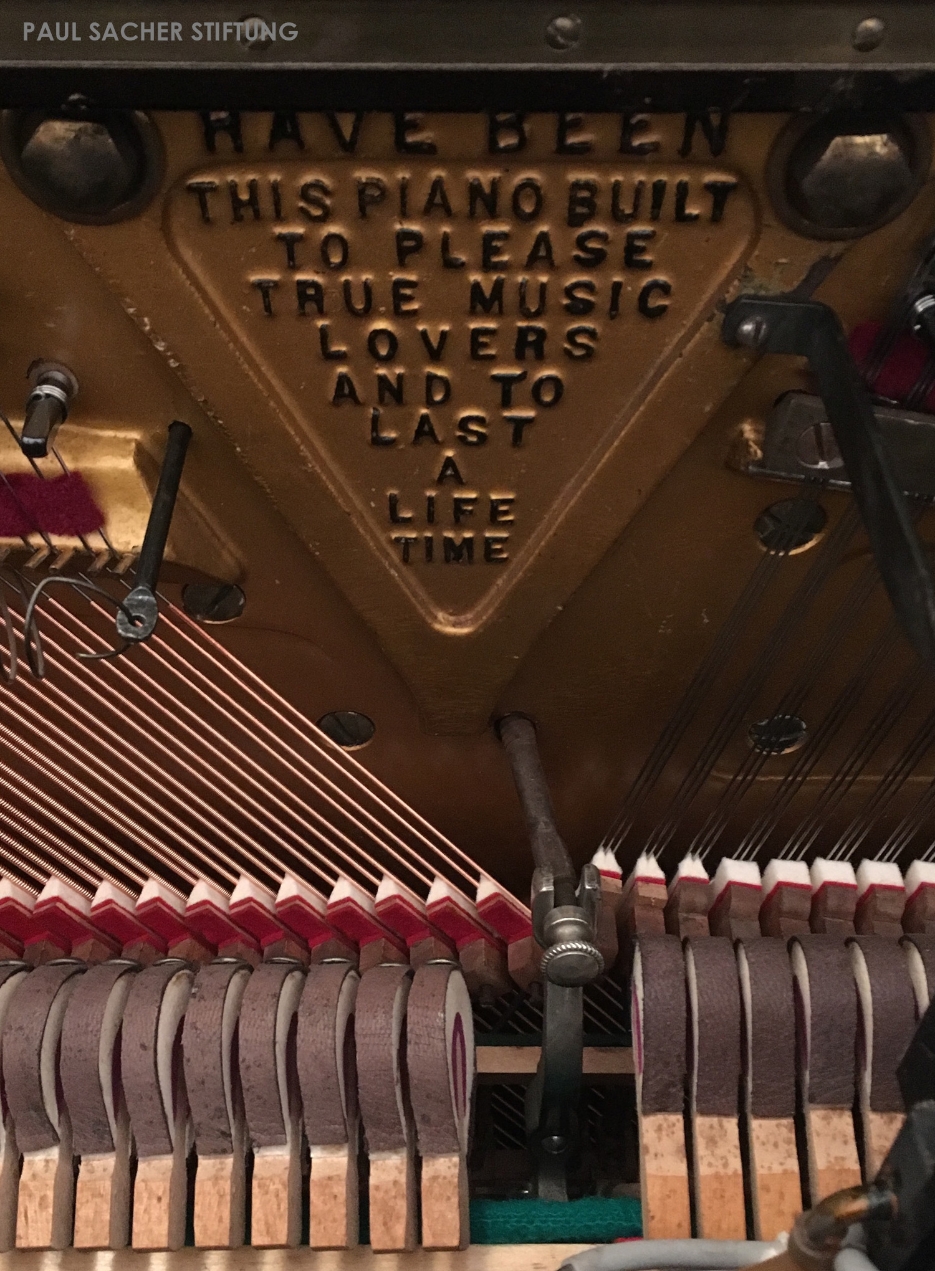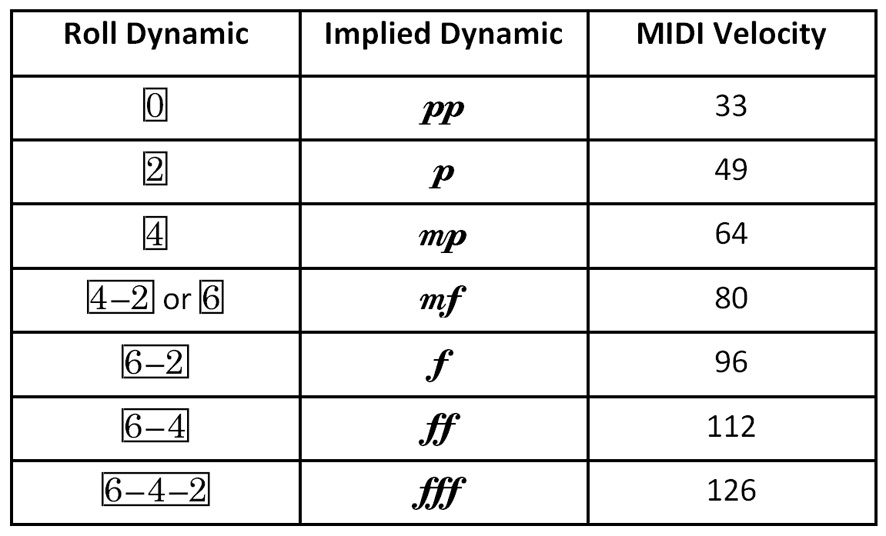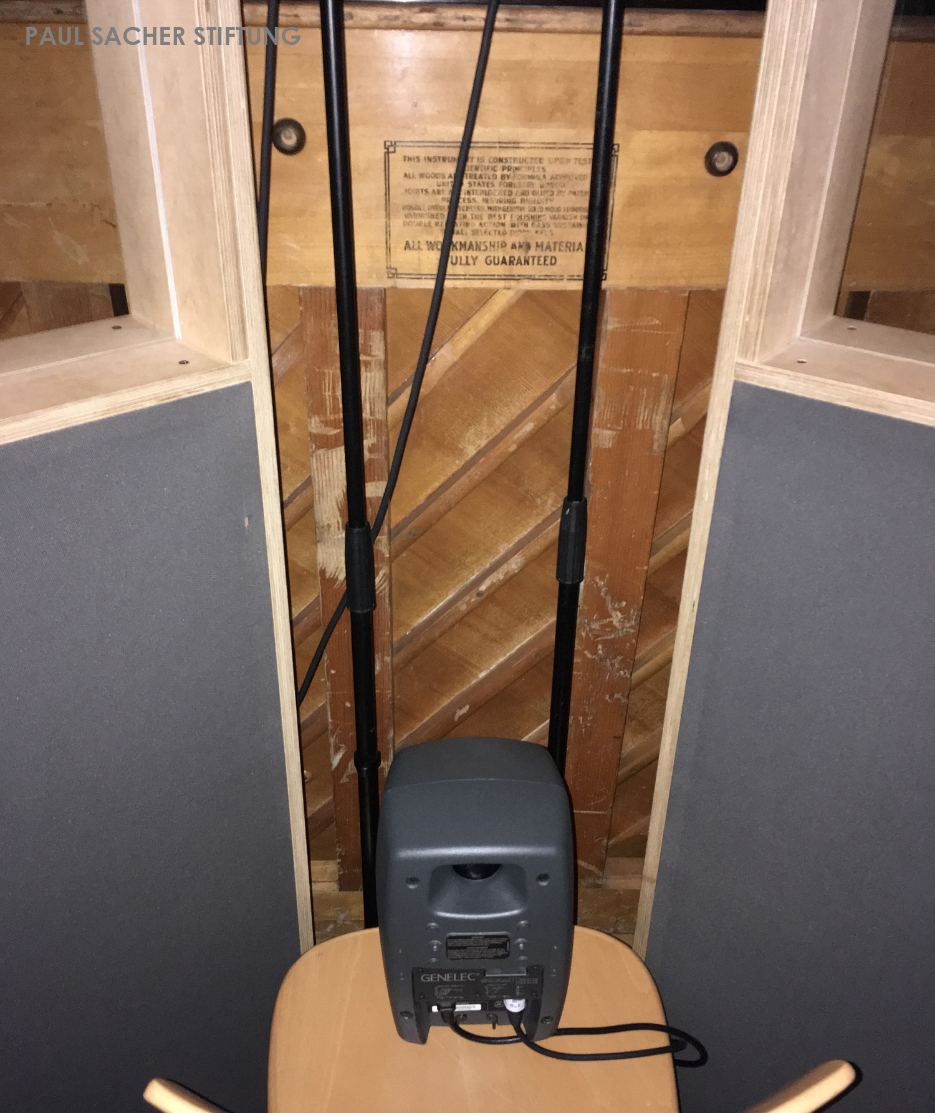Conlon Nancarrow's STUDIES FOR PLAYER PIANO: Towards a Critical Edition
Project Description | Identification of Documents | Acoustic Documentation of the Player Pianos | Nancarrow Sampler | MIDI Files of the Rolls | Music Engraving and Technical Tools | Critical Edition of Selected Works | Online Resources | Research Team and Contact
Nancarrow Sampler
The Nancarrow Sampler is a virtual instrument constructed with the sounds and noises of Conlon Nancarrow’s original player piano with leather hammers [Ex. 1].
Developed in 2018 by Cedric Spindler, the sampler reproduces:
- the seven dynamics levels of the player piano, ranging from dynamic 0 (pp) to 6-4-2 (fff), performed ordinario and with una corda
- the key action noises of the piano
- the vacuum pump, engine, and roll transport noises of the mechanics (which can be turned on and off electively)
- the resonance effect of the sustain pedal (right pedal)
The recording conditions and the strategies followed to obtain the raw materials for the sampler are explained in the article "Lay It as It Plays: On the Acoustic Documentation and Sampling of Conlon Nancarrow’s Player Pianos" (Bugallo, 2021). Although the player piano with metal hammers was similarly documented, the prominence of the vacuum pump noises within this instrument prevented the construction of an equivalent sampler for it.
Principles of Operation
The Nancarrow Sampler utilizes the sampling platform Kontakt 6 (Native Instruments, 2019) and is designed according to the following principles:
- Dynamics. The sampler assigns fixed MIDI velocities to the seven dynamic levels produced by the original player piano [Ex. 2].
- Soft Pedal. The samples with una corda were recorded independently and respond to the same MIDI velocities listed in Ex. 2.
- Sustain Pedal. The resonance effect of the right pedal was captured through impulse-response technology: a sine sweep was played into the resonance board of the piano and the recording was processed by subtracting the impulse and capturing the resulting resonance [Ex. 3]. The obtained resonance can be electively added to the samples.
- Two Channels. The sampler is organized into two different channels. Channel 1 contains the samples of the entire resonance phase of each note, including the key-release in the end. Channel 2 contains the samples of staccato recordings of each note. Channel 2 is conceived to be selectively utilized in passages with a rapid succession of staccato attacks.
Technical Requirements, Interface, and Sound
The Nancarrow Sampler requires a personal computer (Windows or Mac), Kontakt 6 or Kontakt 6 Player (2019), a MIDI sequencer application, and a stereo audio interface. The Paul Sacher Foundation will offer a station with this equipment for research purposes. The sampler is conceived to be utilized primarily in combination with MIDI files of the rolls, which are also in the holdings of the Foundation.
Examples 4–6 show the Nancarrow Sampler at work. The excerpt of Study No. 25 utilizes extreme dynamics and the una corda pedal [Ex. 4]. The excerpts of Study No. 15 and Study No. 49a are presented side by side with actual recordings of the pieces. These recordings were made in the same room and in with the same microphones as the samples, during the acoustic documentation of the player pianos [Exx. 5 and 6].
Ex. 4: Conlon Nancarrow, Study No. 25, Nancarrow Sampler, excerpt.
Ex. 5a: Conlon Nancarrow, Study No. 15, Nancarrow Sampler, excerpt.
Ex. 5b: Conlon Nancarrow, Study No. 15, recording PSS (2018), excerpt.
Ex. 6a: Conlon Nancarrow, Study No. 49a, Nancarrow Sampler, excerpt.
Ex. 6b: Conlon Nancarrow, Study No. 49a, recording PSS (2018), excerpt.


